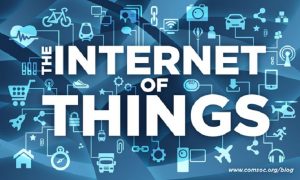For greater growth opportunities, data centre operators and owners should invest in edge through a merger, acquisition or collaboration with an edge-focused firm – says Frost & Sullivan

The number of connected devices will triple by 2025, according to Frost & Sullivan’s latest report.
With most of these applications requiring close to zero-latency data transfer, the $768 million global edge computing market is forecast to touch $3.62 billion by 2022.
The continuous rise in the number of connected and Internet of Things (IoT) devices, connected and autonomous cars, content streaming and multiplayer games is estimated to accelerate the edge computing market at a compound annual growth rate (CAGR) of 36.3 percent from 2017 to 2022.
The report predicted that the fastest-growing edge segments will be small and medium capacity, which are likely to grow at a CAGR of 63.7 percent and 30.9 percent, respectively.
“Edge data centres are particularly focusing on high-density cooling solutions such as rack-mounted cooling and advanced cooling solutions like evaporative/adiabatic cooling, direct liquid cooling/immersion cooling, and economiser segment/free cooling,” said Vasanth Krishnan, Energy Analyst at Frost & Sullivan.
“Meanwhile, market participants are expanding their data centre footprint to Tier II and Tier III cities to develop their network at the edge, creating opportunities in these cities for other participants in the value chain,” he added.
Global Impact of Edge and 5G Technology on Data Centres
As next-gen applications evolve, collaborations will increase among multiple stakeholders across different industries, the report noted.
“It is important for market participants to forge partnerships and leverage existing relationships in the industry in order to unlock new revenue streams,” stated Krishnan.
Colocation providers will look to penetrate Tier II and Tier III cities where the workload potential is expected to increase, while enterprise-class users are likely to opt for edge-based colocation services or push their own networking infrastructure to the edge.
The report indicated that the current market ecosystem for edge data centres is diverse, with all classes of providers looking to pursue edge as part of their strategy. For greater growth opportunities, Frost & Sullivan suggests data centre operators and owners to:
- Invest in edge through a merger, acquisition or collaboration with an edge-focused firm.
- Continue to ensure zero downtime with best-in-class latency standards.
- Expand in Tier II and Tier III cities.
Frost & Sullivan’s recent analysis ‘Global Impact of Edge and 5G Technology on Data Centres, Forecast to 2022’, examined the forms of edge computing, 5G and its advantages and the major trends that will shape the market for edge-based data centres.








